Sea Turtle Conservancy (STC) would like to give a special congratulations to the winners of our 2015 Sea Turtle Scenes Calendar Contest! This year we received a record-breaking amount of entries and all the photos were truly phenomenal. Thank you to everyone who took the time to enter!
The winning photographs will be featured in STC’s 2015 Sea Turtle Scenes Calendar, which will be available online in our gift shop in November—just in time for the holidays! Thank you to all of our participants who made this year’s selection exciting and especially difficult. If you missed out on this one, look out for the 2016 photography contest next summer!
Here are the winners:
COVER PHOTO
By Courtney Huisman
Leatherback hatchlings, Bocas del Toro, Panama

JANUARY
By Hector Chenge
Kemp’s Ridley nesting , Rancho Nuevo, Mexico
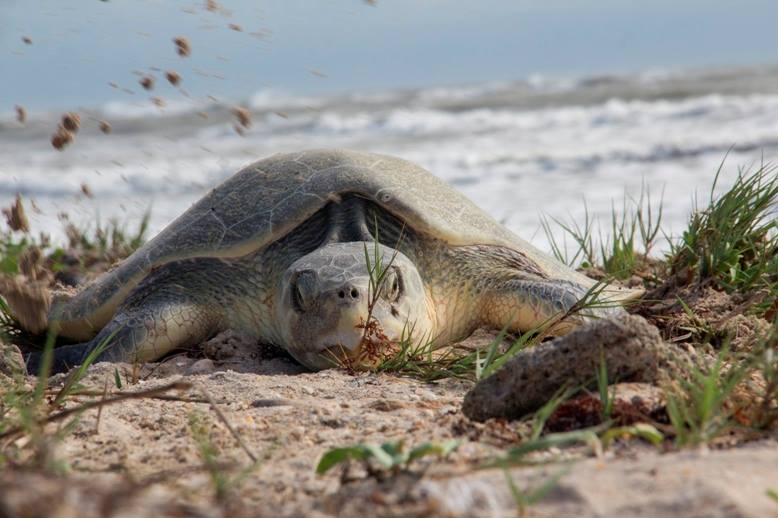
FEBRUARY
By Ben Hicks
Loggerhead hatchling in South Florida
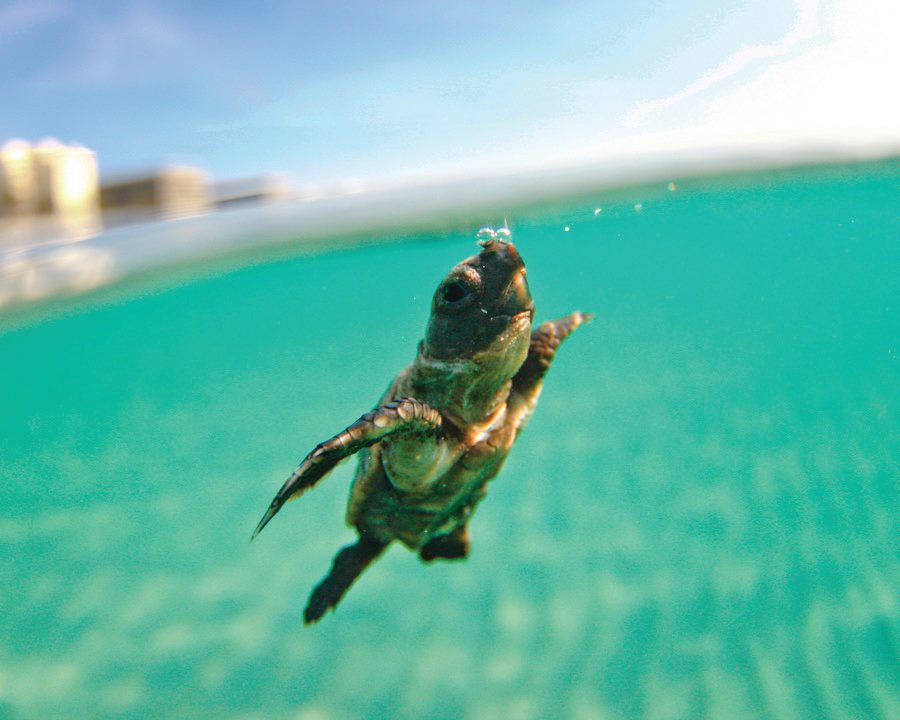
MARCH
By Karla Morales
Leatherback nesting at sunrise, El Unico Beach, Dorado, Puerto Rico

APRIL
By Jun Lao
Green sea turtle and soft corals, Apo Island
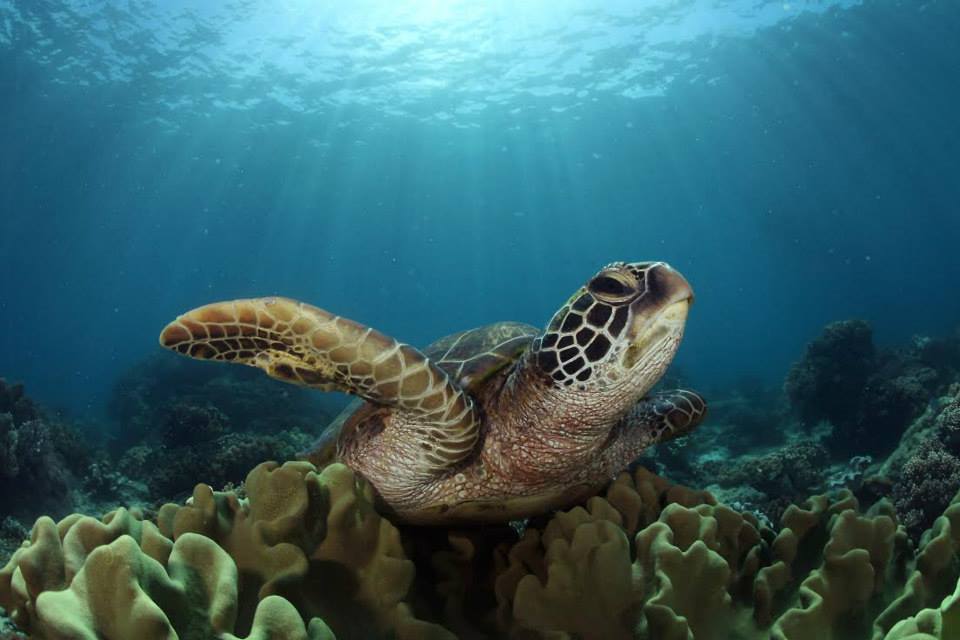
MAY
By Cristian Ramirez Gallego
Leatherback hatchling, Culebra Island, Puerto Rico

JUNE
By Ben Hicks
Green Sea Turtle, Boca Raton, Florida
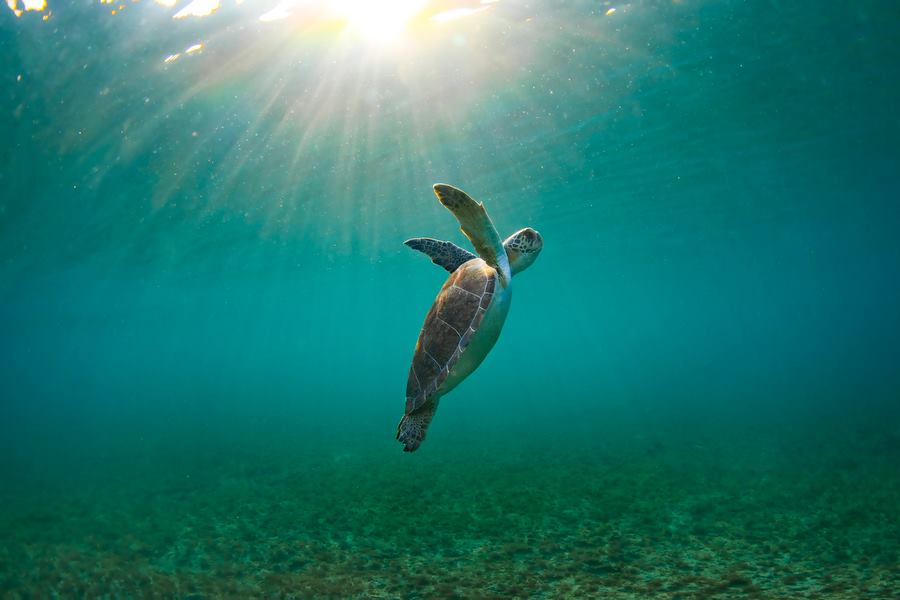
JULY
By Jason Spitz
Hawksbill, Roatan, Honduras

AUGUST
By Karla G. Barrientos-Munoz
Hawksbill nesting, Mona Island, Puerto Rico

SEPTEMBER
By Jasmine Burgan
Loggerhead Sea Turtle, Heron Island, Australia

OCTOBER
By Steven Anderson
Hawksbill sea turtle, West End, Grand Bahamas
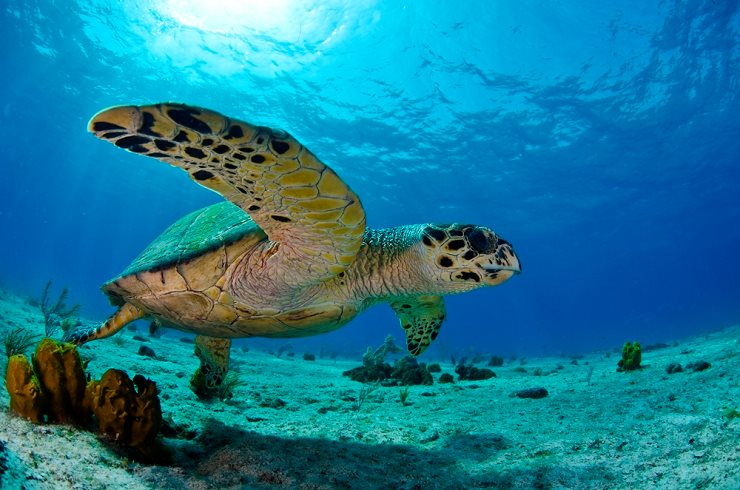
NOVEMBER
By Ulisse Donnini
Green sea turtle hatchling, Meru Betiri National Park, Indonesia

DECEMBER
By Osha Gray Davidson
Green sea turtle, Heron Island, Australia
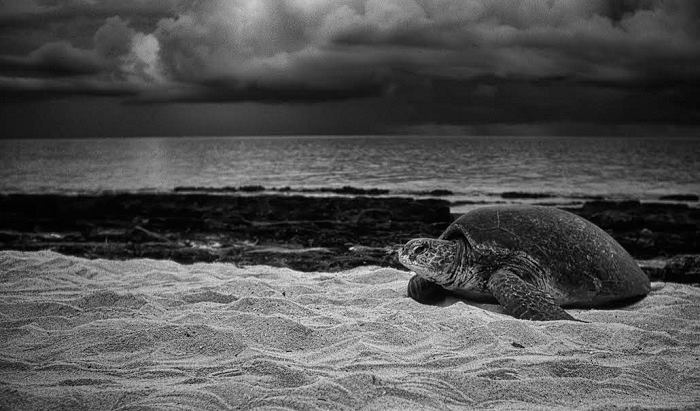
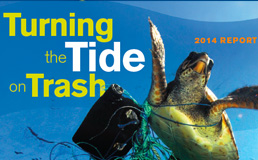 Help us turn the tide on trash! This Saturday, September 20, join us for the world’s largest volunteer effort on behalf of our ocean by participating in the Ocean Conservancy’s International Coastal Cleanup Day! This is an international event, and there are many ways you can get involved locally. If you live near a coastal community, click here to see what’s going on in your town– http://www.oceanconservancy.org/our-work/international-coastal-cleanup/clean-up-locations.html.
Help us turn the tide on trash! This Saturday, September 20, join us for the world’s largest volunteer effort on behalf of our ocean by participating in the Ocean Conservancy’s International Coastal Cleanup Day! This is an international event, and there are many ways you can get involved locally. If you live near a coastal community, click here to see what’s going on in your town– http://www.oceanconservancy.org/our-work/international-coastal-cleanup/clean-up-locations.html.
Even if there is not an official organized event near you, you can still play your part in helping to clean up our planet. Wherever you are and whatever you are doing this weekend, take a trash bag out with you and pick up litter or recyclables that you find. Click here to find all the tools you need to organize a cleanup on your own–http://www.oceanconservancy.org/our-work/international-coastal-cleanup/do-it-yourself-cleanup-tool.html
Last year, nearly 650,000 people participated in the 2013 Cleanup, with events held in 44 states and in more than 90 countries and locations around the globe.
If you plan on participating in any capacity, make sure you sign-up here and take the pledge so Ocean Conservancy can keep track of the data.
If you’re a diver, you can also sign-up for any of the Dive Against Debris events happening across the state of Florida. Click here for more info or check out host Tampa Bay Green Consortium’s website.
Marine debris is especially a problem in Florida and affects human health and safety, endangers our marine wildlife and costs Florida millions in wasted resources and lost revenue each year. One of the biggest impacts to marine debris in Florida is the impact to our sea turtles, one of our oldest creatures on Earth. These beautiful marine creatures are very vulnerable to plastics and other marine debris. They commonly swallow plastic bags, mistaking them for jellyfish. They are often found off the Florida coasts entangled in discarded nets and fishing lines, and are frequently found with ingested fish hooks. Florida is a large nesting ground for sea turtles and hatchlings are also affected by marine debris. When hatchlings move towards the water, physical objects like trash and marine debris, endangering their lives, often obstruct them.
We need your help to solve this problem. For nearly three decades, volunteers with Ocean Conservancy’s International Coastal Cleanup® have picked up everything imaginable along the world’s shorelines: cigarette butts, food wrappers, abandoned fishing gear and even automobiles and kitchen appliances.
Some Florida cleanup events taking place from 9am – 12pm on Saturday, September 20:
Cape Coral:
Deerfield Beach:
Ft. Lauderdale:
Ft. Myers:
Hollywood:
Jacksonville:
Melbourne Beach:
Pompano Beach:
Ruskin:
Sanibel:
Tampa:
Thonotosassa:
**For more locations, please visit http://www.oceanconservancy.org/our-work/international-coastal-cleanup/clean-up-locations.html
WHAT: Tampa Bay Green Consortium (TBGC), Florida’s regional coordinator for Project Aware’s “Dive Against Debris” Program, would like to invite you to participate in a statewide dive cleanup in September to support Ocean Conservancy’s International Coastal Cleanup Day, which takes place Sept. 20. In partnership with volunteer organizations and individuals around the globe, Ocean Conservancy’s International Coastal Cleanup engages people to remove trash from the world’s beaches and waterways. “Dive Against Debris” is organized worldwide by the Project AWARE Foundation, a nonprofit organization that mobilizes divers to protect the ocean.
TBGC is asking all Florida dive shops and dive clubs to organize and conduct a local marine debris cleanup event, using this Florida Marine Debris Data Card, and record all debris data collected. Once completed, we ask that you submit your data back to TBGC so we can aggregate Florida’s findings for submission to the Ocean Trash Index. This data will be used to inform, persuade and empower Florida policy makers and other stakeholders to establish and improve integrated solid waste management practices. In addition, the data will provide an invaluable location-by-location and item-by-item snapshot of what is polluting our Florida beaches and waterway, identifying debris hot spots and inform policy solutions to the marine debris problem.
Since 2009, nearly 152,000 volunteer divers and supporters in Florida have participated in this annual cleanup, with over 2 million pounds of marine debris collected along the Florida coast. We want you to be part of this event and support marine conservation!
WHEN: Anytime in the month of September (International Coastal Cleanup Day is September 20th, 2014). The Florida Marine Debris Data Card must be submitted to partnership@tampabaygreenconsortium.org by September 30th, 2014.
WHERE: At your local Florida beach, dive site, waterway, reef, or other body of water. OR join TBGC for one of their organized clean-up events: http://tampabaygreenconsortium.org/?p=1183 You can also learn more about their Dive Against Debris Events here.
 WHY: Marine debris – a politically correct way to say “our trash in the ocean” – makes its way to our underwater environments by the tons. Ocean trash is a problem in Florida which affects human health and safety, endangers our marine wildlife and costs Florida millions in wasted resources and lost revenue each year. One of the biggest impacts to marine debris in Florida is the impact to our sea turtles, one of our oldest creatures on Earth. These beautiful marine creatures are very vulnerable to plastics and other marine debris. They commonly swallow plastic bags, mistaking them for jellyfish. They are often found off the Florida coasts entangled in discarded nets and fishing lines, and are frequently found with ingested fish hooks. Florida is a large nesting ground for sea turtles and hatchlings are also affected by marine debris. When hatchlings move towards the water, physical objects like trash and marine debris, endangering their lives, often obstruct them.
WHY: Marine debris – a politically correct way to say “our trash in the ocean” – makes its way to our underwater environments by the tons. Ocean trash is a problem in Florida which affects human health and safety, endangers our marine wildlife and costs Florida millions in wasted resources and lost revenue each year. One of the biggest impacts to marine debris in Florida is the impact to our sea turtles, one of our oldest creatures on Earth. These beautiful marine creatures are very vulnerable to plastics and other marine debris. They commonly swallow plastic bags, mistaking them for jellyfish. They are often found off the Florida coasts entangled in discarded nets and fishing lines, and are frequently found with ingested fish hooks. Florida is a large nesting ground for sea turtles and hatchlings are also affected by marine debris. When hatchlings move towards the water, physical objects like trash and marine debris, endangering their lives, often obstruct them.
Media: When you have your event scheduled, contact us so we can promote your event and dive shop/club in our weekly media release to all Florida papers and TV stations.
About Tampa Bay Green Consortium
Through strategic alliances, partnerships and people, the Tampa Bay Green Consortium, a 501(c) non- profit organization, provides the guidance, resources, and tools to help increase environmental awareness within the community to promote the sharing of knowledge, people and resources needed for environment projects focusing on sea turtle conservation, marine debris, and environmental education.
A state-of-the-art clean solar energy system is helping Sea Turtle Conservancy (STC) protect endangered sea turtles at its new research station on Soropta Beach, Panama. Designed and installed by FTL Global Solutions (FTL), an innovator of lightweight, rugged energy systems for use in remote areas, this reliable green energy system now supplies power for lighting, security, water and cooking needs as STC biologists work throughout the night protecting endangered leatherback turtles and their hatchlings at one of the most important nesting beaches for this species in the Atlantic.
Soropta Beach, a remote black-sand beach on Panama’s Caribbean coast, is home to a large nesting colony of leatherback sea turtles. Unfortunately, for years Soropta’s leatherbacks and their nests have been illegally harvested by poachers who kill the turtles for their meat and raid nests to steal the eggs. STC‘s conservation program is helping prevent poaching by protecting nests, monitoring nesting activity, and building support for turtle conservation with the local community. The work takes place out of a rustic station, where the lack of electricity made the work extremely challenging – until now.
“The new solar energy system installed by FTL Global Solutions is making our conservation efforts more effective and safe,” said STC executive director David Godfrey.
STC‘s conservation efforts at Soropta began in 2013, when it acquired an old farm house and began upgrading it to accommodate a year-round turtle protection program. STC then hired and trained local community members to assist with the research and conservation work. Without a year-round conservation presence at Soropta, poachers would move back in and threaten the survival of this important nesting colony.
“Acquiring solar energy at a remote place like Soropta Beach could not have been done without the expert advice and assistance of FTL,” said Godfrey. “Their team guided us through the process; helped deliver the system to our remote station and even sent an expert to install the system and train our staff in its use and maintenance.”
“What makes the lighting so powerful is what it brings to Soropta,” said FTL spokesperson Paul Murphy. “The lighting extends the useful working day allowing the teams to achieve much more during each day, plus the social cohesion it brings to Soropta is incredible.”
The FTL solar energy system now provides critical power needs to the station’s various buildings where staff members live, work and eat. Running water is now supplied to a restroom and shower facility, and the station compound and dock now have security lighting in place.
“The first evening the lights were in and turned on was the first evening that the teams actually sat around the table after dinner and just talked,” said Murphy. “The camaraderie was a delight to watch, the joy on faces when the lights were turned on for dinner was moving. What FTL brings is more than just a lighting solution– it’s a life changing solution.”
Although improperly managed artificial lights can disorient nesting turtles and their hatchlings, STC has used the latest turtle-friendly lighting technology throughout the Soropta station. All lights use red LED technology and are completely shielded from view on the beach. Using such technology, it is possible to provide light for human needs and safety on the beach without disturbing nesting sea turtles and other coastal wildlife.
In addition to FTL contributing their expertise and reducing the cost of the system installation, STC would also like to thank our Board of Directors as well as the IC Corporation and their foundation, IC Cares, for financial assistance with this project. IC Corporation has offices in Panama and provides support for STC’s sea turtle work at Soropta Beach.
___________________________________________________________________________
 About Sea Turtle Conservancy: Sea Turtle Conservancy is an international nonprofit and the world’s oldest marine turtle research and conservation organization. Founded in 1959, Sea Turtle Conservancy is dedicated to ensuring the survival of sea turtles through research, education, advocacy and the protection of natural habitats upon which they depend. Learn more at www.conserveturtles.org.
About Sea Turtle Conservancy: Sea Turtle Conservancy is an international nonprofit and the world’s oldest marine turtle research and conservation organization. Founded in 1959, Sea Turtle Conservancy is dedicated to ensuring the survival of sea turtles through research, education, advocacy and the protection of natural habitats upon which they depend. Learn more at www.conserveturtles.org.
About FTL Global Solutions: FTL Global Solutions provides lightweight, mobile and highly ruggedized lighting systems for commercial, defense and humanitarian requirement located in remote areas. They founded the FTL Global Outreach Initiative to provide off grid power solutions to schools, orphanages, medical clinics and conservation programs around the world. Learn more at www.ftlglobal.net. 
Sea Turtle Conservancy (STC) is excited to introduce one of our newest Tour de Turtles competitors, Esperanza! Esperanza is an adult green sea turtle that will be outfitted with a satellite transmitter on July 4, 2014 in Tortuguero, Costa Rica, the most important nesting site of the endangered green sea turtle in the Western Hemisphere. She was named by her sponsors, Contiki Holidays and The TreadRight Foundation, via a Facebook contest. Esperanza is the Spanish word for “hope.”
This is the first time Contiki and TreadRight have partnered with STC for the Tour de Turtles. This unique new partnership is multi-faceted and puts the spotlight on sea turtle conservation in popular tourism countries.
Contiki, a travel company that was started in 1962, offers travel tours in 46 countries to 18 – 35-year-olds. The TreadRight Foundation is a nonprofit organization established in 2008 by Contiki and other travel brands to encourage sustainable tourism among their brands and the places they visit.
Lauren McPhillips, public relations and partnership manager for Contiki, said sponsoring a turtle in Tour de Turtles was a simple decision for them because the program increases a sea turtle’s chance of long term survival and, “aids in enabling a greater understanding of these majestic sea creatures and their migration patterns.”
In 2011, Contiki began Contiki Cares, which focuses on becoming a more sustainable organization by encouraging their travelers to respect and care for the places they visit so those places can be discovered for generations to come. They also partnered with environmental activist and documentary filmmaker Celine Cousteau.
According to McPhillips, “Contiki is obsessed with all things sun, sand and surf, and have made ocean conservation the focus for partnerships.”
McPhillips said Tortuguero is a popular stop for travelers who go on Contiki’s Costa Rica trip, and that it’s evident sea turtles are essential to Tortuguero. Both Contiki and TreadRight had recognized STC’s work in preserving the places they travel to for quite some time.
They also admired that STC creates opportunities for young, aspiring researchers and conservationists, she said.
Shannon Guihan, program director for TreadRight Foundation, said it was a combination of those things that made a partnership with STC “a perfect fit.”
In honor of Earth Month this year, Contiki sent Cousteau along with 12 young storytellers to Tortuguero to explore the country’s beauty, learn about STC’s mission and tell the story of it all in their own ways. The group consisted of bloggers, writers, photographers and more who came from all over the world including countries like the Philippines, the United States and New Zealand.
During their trip, the group of storytellers regularly posted to various social media sites such as Facebook, Twitter and Instagram to share their experience. They also put together an inspiring video documenting their weeklong visit to Costa Rica, highlighting STC’s work with sea turtles.
Contiki has pledged to sponsor an additional turtle in Tour de Turtles if the documentary video reaches 250,000 views. If you haven’t checked out the video yet, you can watch it online at http://www.contiki.com/storytellers.
Since the Storytellers trip, every Contiki Tour that goes through Tortuguero will have the opportunity to adopt a turtle through STC.
In addition to sponsoring a Tour de Turtles competitor, Contiki and TreadRight also sponsored the research of a member of STC’s Research Assistantship Program.
McPhillips and Guihan said they are looking forward to seeing how their efforts aid in the research and survival of turtles like Esperanza and can’t wait to share the results with their travelers.
STC would like to thank Contiki and TreadRight for helping our cause!
Sea Turtle Conservancy (STC) is proud to announce its 9th consecutive top rating from Charity Navigator, the leading evaluator of non-profit groups in the United States. STC once again received 4 out of 4 stars, indicating that our organization adheres to good governance and other practices that minimize the chance of unethical activities and consistently executes our mission in a fiscally responsible way.

“The Board and staff of Sea Turtle Conservancy take great pride in our consistent high ratings from Charity Navigator,” said David Godfrey, STC executive director, “and it gives our donors confidence that their contributions are being managed wisely to the maximum benefit of sea turtles.”
According to Charity Navigator, only 1% of the charities they rate have received 9 consecutive 4-star evaluations, and this indicates “that Sea Turtle Conservancy outperforms most other charities in America. This ‘exceptional’ designation from Charity Navigator differentiates Sea Turtle Conservancy from its peers and demonstrates to the public it is worthy of their trust.”
STC spends 85 cents of every dollar donated directly on research, conservation and education programs. STC’s commitment to transparency, good governance and fiscal responsibility ensures that donations are used in an efficient manner to support conservation programs.
“STC’s coveted 4-star rating puts it in a very select group of high-performing charities,” said Ken Berger, President and CEO of Charity Navigator. “Out of the thousands of nonprofits Charity Navigator evaluates, only one out of four receives 4 stars – a rating that, now, with our new Accountability and Transparency metrics, demands even greater rigor, responsibility and commitment to openness. STC’s supporters should feel more confident that their hard-earned dollars are being used efficiently and responsibly when it acquires such a high rating.”
STC’s rating and other information about charitable giving are available free of charge on Charity Navigator.
The last large populations of the leatherback turtle are at risk because their migratory routes in the Atlantic Ocean converge with the locations of industrial fisheries, a new study shows.
Sea Turtle Conservancy (STC) is one of ten organizations that worked together to publish the study which provides insight into the complex patterns of movement by leatherback turtles in the Atlantic and their overlap and accidental capture by industrial longline fisheries for pelagic (open ocean) species such as tuna and swordfish.
Between 1995 and 2010, a total of 106 leatherback females from populations throughout the Atlantic were equipped with satellite tags and tracked over extended periods of time. Satellite tracking data revealed that leatherbacks display complex patterns of movement in national coastal and international waters and use the waters of 46 of the 97 countries bordering the Atlantic. By overlaying the turtles’ tracks with information on fishing effort, researchers were able to identify nine areas where high risk of capture by fisheries exists, four in the North Atlantic and five in the South Atlantic. Sea Turtle Conservancy’s Technology and Research Specialist Dan Evans is a co-author on the report.
Maps of the daily locations of the turtles revealed that Atlantic leatherbacks use both deep sea international waters (more than 200 nautical miles from land) and coastal national waters, either seasonally or year-round, in a complex pattern of habitat use.
About 16,600 female leatherbacks breed in the Atlantic each year, and while some populations are doing well, accidental capture in longline and other fisheries remains an important conservation threat because fishing effort is intense. More than 4 billion hooks – equivalent to 730,000 hooks per day – were set throughout the entire Atlantic Ocean by industrial fisheries between 1995 and 2010, the study shows.
“Fewer than 1,000 females nest in Florida each year, but the coastal waters of the eastern United States represent one of the nine high risk areas for leatherbacks in the Atlantic during April – June and October – December,” said Marydele Donnelly, Director of International Policy for STC. “The findings of this study have significant policy implications. Multinational collaboration will be needed to reduce leatherback capture through changes in fishing equipment, fishing methodology, and seasonal closures of some areas to fishing.”
![]() The study results from the collaborative efforts of 10 data providers that have tracked leatherback turtles in the Atlantic Ocean since 1995 through the Trans-Atlantic Leatherback Conservation Initiative (TALCIN).
The study results from the collaborative efforts of 10 data providers that have tracked leatherback turtles in the Atlantic Ocean since 1995 through the Trans-Atlantic Leatherback Conservation Initiative (TALCIN).
The article, ‘Pan-Atlantic analysis of the overlap of a highly migratory species, the leatherback turtle, with pelagic longline fisheries,’ is published in Proceedings of the Royal Society B.
Other contributing authors on this report include: S. Fossette, Department of Biosciences at Swansea University; M.J. Witt, Environment and Sustainability Institute, University of Exeter; A.C. Broderick, Center for Ecology and Conservation, University of Exeter; P. Miller, Center for Investigation and Marine Conservation, Uruguay; M.A. Nalovic, Virginia Institute of Marine Science; D. Albareda, Aquamarina, Del Besugo 1525, Pinamar, Buenos Aires 7167, Argentina, Jardín Zoológico de la Ciudad de Buenos Aires, Republica de la India 3000,Buenos Aires 1425, Argentina, and Regional Program for Sea Turtles Research and Conservation of Argentina; A.P. Almeida, ICMBio–Reserva Biológica de Comboios, Linhares, Brazil; D. Chacon-Chaverri, Asociación LAST, Apdo 496-1100, Tibás, Costa Rica; M. S. Coyne, SEATURTLE.org, Durham, NC; A. Domingo, Dirección Nacional de Recursos Acuáticos, Constituyente 1497, Uruguay; S. Eckert, WIDECAST and Biology and Natural Resources Department, Principia College; A. Fallabrino, Karumbé – Av. Rivera 3245 (Zoo Villa Dolores), Uruguay; S. Ferraroli, Rue Victor Hugo, France; A. Formia, Wildlife Conservation Society; B. Giffoni, Fundação Pró-TAMAR, Rio Vermelho, Salvador, Bahia, Brazil; G. C. Hays, Department of Biosciences at Swansea University, Center for Integrative Ecology, Deakin University; G. Hughes, 183 Amber Valley, P/Bag X30, Howick 3290, South Africa; L. Kelle, WWF, French Guiana; A. Leslie, WWF International, Switzerland; M. Lopez-Mendilaharsu, Karumbé – Av. Rivera 3245 (Zoo Villa Dolores), Uruguay and Fundação Pró-TAMAR, Rio Vermelho, Salvador, Bahia, Brazil; P. Luschi, Department of Biology, University of Pisa in Italy; L. Prosdocimi, Regional Program for Sea Turtles Research and Conservation of Argentina and Laboratorio Genética de la Estructura Poblacional, Departamento de Ecología, Genética y Evolución, FCEN, Universidad de Buenos Aires, Capital Federal, Buenos Aires, Argentina; S. Rodriguez-Heredia, Regional Program for Sea Turtles Research and Conservation in Argentina and Fundación Mundo Marino, Buenos Aires, Argentina; A. Turny, WWF French Guina; S. Verhage, WWF Gabon; B.J. Godley, Center for Ecology and Conservation University of Exeter.
Sea Turtle Conservancy’s Eco-Volunteer Adventure is a unique and educational way to take part in travel that helps conservation. With hands-on opportunities, Eco-Volunteer Adventures are designed to get you up close and personal with sea turtles! Click here for a sample turtle program itinerary or read on for a first-hand account of Sea Turtle Conservancy’s Eco-Volunteer Program, written by Eco-Volunteer Heather Suffron.
********************************************************************
So there I was, hiking along the beach in the middle of the night, large caliper in hand, as the hot tropical breeze rushed against my face while I searched with my patrol partners for mama sea turtle tracks in the sand and felt the need to pinch myself for the umpteenth time to make sure I wasn’t dreaming. But it wasn’t a dream, though it very much felt like one. Nor was it an episode of Planet Earth or National Geographic or Mutual of Omaha’s Wild Kingdom, though it felt like one. I was actually walking the beach while the Caribbean surf splashed at my side, and the moon illuminated the night sky as we scanned the sand. And I was actually working to help monitor, protect, and gather data on these magnificent creatures as an Eco-Volunteer with Sea Turtle Conservancy (STC)!
Having chosen to take some time off work to participate in various volunteer projects around the world, I was in the midst of my week with STC on the Caribbean coast of Costa Rica. I researched and chose each of my projects based on location, type of volunteer work, cost, and integrity and effectiveness of the program, and I could not have been happier with my experience at STC.
I participated as an Eco-Volunteer at the field station in Tortuguero, an incredibly unique and sensitive location that serves as nesting habitat for green, leatherback, hawksbill and the occasional loggerhead sea turtle – all of which are either threatened or endangered species.
Participants in the Eco-Volunteer program can join for one to three weeks, and there is often a birding research option, as well. Each sea turtle nesting season, a group of Research Assistants (RAs) live and work at the field station for three months at a time. As an Eco-Volunteer, I, too, stayed at the field station in a very clean and well-appointed research residence and was welcomed into the fold.
While there, I participated in a number of nighttime beach patrols, as well as a few early morning track surveys. This is truly on-the-ground, hands-on work with the RAs; we checked nesting turtles for tags and general health, measured their shells, and logged the data during beach patrols, and counted new tracks and monitored a number of nests during the track surveys.
Getting to know the coordinators and RAs was an additional joy. They were full of life, energy and ideas, and are clearly interested in, and dedicated to, helping protect the planet and its wildlife.
Working with turtles is an experience I will simply never forget. The females frequently return to the same beach they were born in order to lay their own eggs, nesting several times in the same season. They are amazing creatures, and I felt truly humbled and honored to be working with them and getting to do things that most travelers and tourists never have the opportunity to try.
Furthermore, I was incredibly fortunate to be there when a number of hatchlings emerged from their nests, and the experience of watching tiny baby sea turtles make their way across the beach to dip their flippers in the sea for the first time is pretty powerful and special!
I was also able to learn more about STC’s efforts within the community. In addition to research on the beach, the STC staff and RAs are involved in community outreach efforts, environmental education, and ongoing discussions with local groups and organizations. With time and continued advocacy, I think even more progress will be made towards further preservation efforts.
All in all, I had a thrilling experience while at STC – and one in which I felt very involved. It was a once-in-a-lifetime opportunity for me, and I’m so glad I took it!
********************************************************************
STC has available Eco-Volunteer opportunities for leatherback turtles, green turtles, and birding! Eco-Volunteers must be 18 years or older (16 years or older accompanied by an adult). This experience is ideal for educators, couples, spring breakers, groups, or anyone who is interested in helping sea turtles and making a difference. Eco-Volunteer Adventures run from March through October. Options include 1, 2 and 3 week sessions. For more info, visit STC’s Eco-Volunteer page online or click here to register for a program.
Sea Turtle Conservancy is currently accepting applications for sea turtle research assistants in Tortuguero, Costa Rica. Research and monitoring of sea turtles in Tortuguero was initiated in the 1950’s by legendary sea turtle researcher Dr. Archie Carr. Dr. Carr continued his work in Tortuguero until his passing in 1987 and STC continues to conduct annual programs at the site, making it the longest ongoing sea turtle conservation and monitoring program in the world.
Between eight and sixteen Research Assistants (RAs) will be trained in sea turtle monitoring techniques by, and work under the supervision of, the STC Field Research Coordinator. The RAs main responsibilities include nightly tagging, track surveys, nest monitoring and excavation. RAs are responsible for tagging nesting turtles, collecting biometric data from females, recording nesting activity during track surveys, and other pertinent data collection. RA positions are voluntary and selected RAs will receive board and lodging at the STC Field Station for the duration of their time working for STC in Tortuguero.
STC Alumni RAs have gone on to work for respected conservation organizations, universities and government agencies worldwide. Or like previous RA Ralph Pace, they continue their work with STC. Ralph was an RA in 2010 and then took on the role of STC Field Research Coordinator in 2013. Ralph is also a talented photographer. Below are some exciting details and photos from his time spent in Tortuguero with STC:
“When I took the position here as the Field Research Coordinator in Tortuguero, Costa Rica I knew fully what I was getting into. Having spent three months here as a Research Assistant for half of the green turtle season in 2010, I was well aware of the wild adventure and surprise that Tortuguero would provide. When most people hear I am working on a Caribbean beach in Costa Rica they envision a white sand beach where luxurious tiki style huts hang over crystal clear water. But, here it is far more rustic and wild. Imagine Jungle Book meets Indiana Jones. In reality, Tortuguero is a highly dynamic beach who’s landscape changes as fast as the tide. The beach is backed by a lush, dense jungle that is supported by the migration of sea turtles.
Under the clearest of Milky Way skies, we set out to patrol the beach nightly in search of three to four hundred pound nesting female turtles. We do so to collect data and monitor their epic population rebound of 500% here in Tortuguero. Then as quickly as the turtles appear they vanish on their return to far off feeding ground around the Caribbean.
The beach becomes an expressway for millions of babies who are only just beginning their majestic journey. Just this morning during a track survey, I stood in shock as six hundred hatchlings emerged under the hardest of rains. As the baby hatchlings entered the water I couldn’t help but wonder where the offshore currents will take them. Will they go to Bermuda, Brazil or Cuba as many of our turtles do? Or, will they settle closer to home in Nicaragua? (Click here to watch an amazing video Ralph shot of green sea turtles hatching!)
As with all the other mysteries, I wonder, where have six months gone? Then I remember the thousands of turtles I have seen, hundreds of hours on the beach, the dozen meteor showers, the manatee I took DNA samples of, the jaguar I stood face to face with, the daily howler monkey alarm clocks at 5 am, the hundreds of kids served in the local schools and the countless friends I’ve met from around the world that have made it all so epic. So what makes this place so special? Of the five continents I have explored, the mystique and adventure of Tortuguero is like no other place I have ever seen or imagined.”
To view more spectacular sea turtle photos by Ralph, check out his Facebook page RALFotos.
**************************************************
For more information about STC’s Research Assistant positions including a project summary and work description, click here. The deadline to apply for the Leatherback Research Program is January 7, 2014 and the Green Turtle Program deadline is March 10, 2014. For questions pertaining to STC’s Research Assistant Program, please contact STC Scientific Director Emma Harrison at emma@conserveturtles.org.
Ghost nets are fishing nets that have been discarded, abandoned or lost in the ocean, and are a major threat to sea creatures. Sometimes these nets will wash ashore but other times they are carried on ocean currents far from their place of origin, trapping and entangling anything in their path, including sea turtles. This is where the Olive Ridley Project (ORP) steps in.
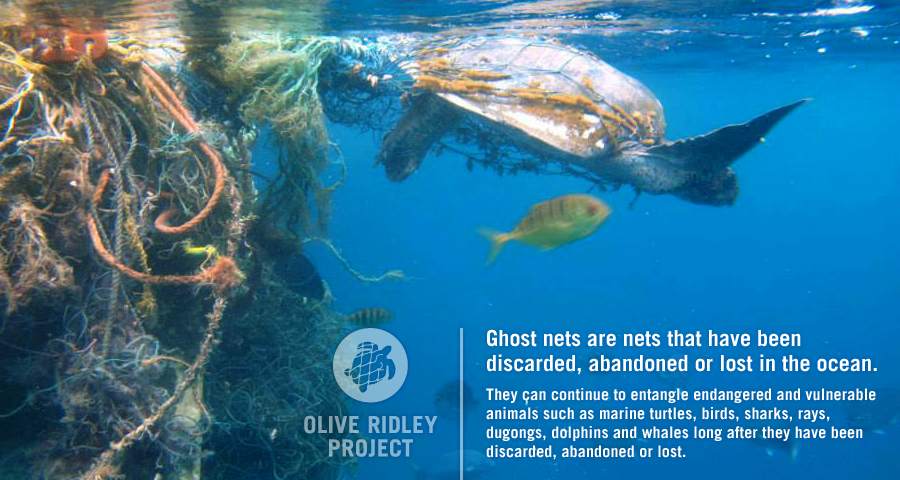
Created in July 2013 by marine biologists Martin Stelfox and David Balson, the Olive Ridley Project started as an initiative to target ghost nets in the Indian Ocean. The project consists of four elements to tackle ghost nets: research, awareness, removal and recycling. Stelfox and Balson both work in the Maldives and were encountering a large number of olive ridley sea turtles entangled in ghost nets. Olive ridleys get their name from the coloring of their heart-shaped shell, which starts out gray but becomes olive green once the turtles are adults.
This species is particularly rare in the Maldives. High nesting populations are found close by in Orissa, India, and statistics suggest that 80% of the world’s nesting takes place here. The Maldives, however, are a critical resting point for many migratory species like sea turtles. Unfortunately, most encounters with this vulnerable sea turtle are under stressful conditions and a large portion are found entangled in discarded fishing nets. Entanglement often leads to severe injuries and flipper amputations are common. In addition, stress experienced by turtles during this ordeal leads to buoyancy problems, which means they cannot dive.
Since 2011, 65 olive ridleys have been found trapped in fishing nets. Many suffer severe injuries such as amputations and deep lacerations. Often rehabilitation back into the wild is extremely difficult and many do not survive. In the short time the Olive Ridley Project has been running, 21 olive ridley turtles have been found injured by ghost nets. It is difficult to say for certain where these nets originate and changes in current direction during monsoons add to the complexity in determining where drifting nets come from.

This olive ridley lost two front flippers and suffered from severe lacerations around its neck from ghost nets
In order to combat this problem, the ORP is aiming to actively target the origin of ghost nets using information gathered from the community. In order for this project to be successful, they need information from everyone who finds nets while conducting research or diving in the Indian Ocean or a net that has washed ashore on a beach near the Indian Ocean. A simple picture with exact location found would be enough data for them to use, but if measurements can be taken that would be even better.
On October 15, Sea Turtle Conservancy joined the campaign organized by the World Society for the Protection of Animals to urge the Cayman Turtle Farm (CTF) to cease its commercial operations and become an educational and conservation facility benefiting green turtles in the Caribbean. We are now responding to CTF’s October 19 rebuttal of the humane, scientific and conservation issues raised by the campaign.
First, CTF maintains that it is a humane operation. If this were the case, how did 300 turtles perish this summer in one tank without water? Our organization has received expressions of concern about the facilities and treatment of turtles from our members and others who have toured the facility while on vacation, with complaints about dirty water and crowding being highest on the list of problems. Both crowding and dirty water constitute inhumane conditions.
Second, in all situations involving the release of captive animals into the wild, the spread of disease to wild populations is a concern. This includes the introduction of new and old diseases to avian, mammal, reptile and amphibian populations. The stress of captivity can conducive to disease no matter how good conditions are and certainly in the case of CTF, poor sanitary conditions are a known issue. Perhaps the CTF is doing a better job with this issue now than it has done in past decades as it admits, “There have been significant strides at the Cayman Turtle Farm since that time to eradicate diseases at the Farm that are present in the wild population.”
Third, for years STC staff have expressed concern about the conservation benefits of the Cayman Turtle Farm releasing sea turtles of mixed genetic stock into the Caribbean. At the time that these releases began, sea turtle scientists did not know that sea turtles from different nesting areas have distinct DNA that allows us to identify their nesting beaches of origin. Turtles hatched at CTF are of mixed lineage because the breeding turtles originated from six distinct areas in the Western Atlantic, specifically Suriname, Costa Rica, Nicaragua, Guyana, Ascension Island and Mexico. Once genetics were understood, many in the sea turtle conservation community appealed to CTF to stop the practice of releasing turtles of mixed lineage but to no avail. The concerns we have expressed about genetic problems are specifically related to the mixing of the gene pool.
Lastly, we recommend that footage and images of CTF operations recently obtained by WSPA be included in the scheduled evaluation in December by an independent reviewer. Now that CTF management is on notice, in all likelihood conditions are already improving. We anticipate that crowding will be reduced, failing turtles will be dispatched, and water will be cleaned more often than it was in the past. We also expect that the reviewer will have access to all CTF facilities, including the abatoir. In the best case scenario, a representative of WSPA or STC should be invited to participate in touring the facility with the reviewer.
To support our efforts to stop sea turtle farming at the Cayman Turtle Farm, please visit www.stopseaturtlefarm.org and sign the petition. You can also share the link on Facebook and Twitter at #stopseaturtlefarming to make your voice heard.
Sea Turtle Conservancy (STC) is often asked its opinion regarding the captive breeding of turtles, as is done at the Cayman Islands Turtle Farm. Although the idea seems to make sense intuitively, it is STC’s position that this is not the best way to save or restore sea turtle populations. In fact, there is good reason to believe it actually causes more harm than good. This opinion is shared by many sea turtle biologists and conservationists around the world.
I speak from experience. STC was one of the first groups in the world to establish a captive breeding program. In the 1950s, through our “Operation Green Turtle,” STC nurtured thousands of green turtle hatchlings in Tortuguero, Costa Rica, and then transported them throughout the Caribbean to be released. We hoped to increase turtle stocks in the Caribbean and start new nesting colonies throughout the region. It was and is a noble cause, but quite simply it didn’t work.
Regarding the Cayman Turtle Farm specifically, controversy over the Farm’s practices began when the Farm shipped (illegally in our opinion) 20 live turtles for display in for-profit aquariums in Europe. STC is very familiar with the turtle culture in the Cayman Islands. It’s not unlike the culture in many other Caribbean island nations where local, wild breeding turtle populations have been wiped out by over consumption (as has happened in the Cayman Islands). Nevertheless, Cayman Islands government has the authority to set its own regulations regarding sea turtles. STC objects to those actions that have the potential to affect wild populations in the broader Caribbean. Those actions include (1) releasing farm raised turtles into the wild (and then claiming that this is helping conservation), and (2) creating international demand for either turtle meat or shell products. The farm does both of these, and while they may intend to feed that demand only with farm-raised animals, in the real world such demand inevitably will lead to clandestine harvesting of wild turtles. Just look at the situation with hawksbills, which are harvested relentlessly throughout the Caribbean to feed the demand for shell in Japan and elsewhere.

Green turtle showing genetic defects
The problem with releasing Cayman Farm-raised turtles into the wild is three-fold. First, because of the conditions under which turtles live and interact in captivity at the farm, a number of documented diseases have been reported in the Cayman Farm population. When these turtles are released into the wild, there is a real possibility of introducing new diseases into the wild Caribbean population.
Second, the original stock used to start the Cayman Farm (originally called Mariculture, Ltd.) was collected from breeding colonies throughout the Atlantic (and possibly elsewhere – the fact is the records are not entirely intact). As an aside, it is the position of the Government of Costa Rica that Mariculture collected eggs illegally in Costa Rica. Regardless of the legality of the egg collection, the point is that releasing turtles of mixed genetic origin into the wild very likely could affect the wild population in unanticipated ways. For example, it is widely accepted that little green turtles are hatched with an inherited ability to navigate to important foraging, breeding and nesting sites at various life stages. This critical ability could be impacted by breeding turtles that originated from different oceans, and this costly deficiency could be passed on to the wild population as these turtles are released to breed and produce offspring. Yes, a relatively small number of Cayman Farm turtles have been found mingling with wild populations in Florida, Nicaragua and elsewhere (suggesting that at least some have migrated successfully and are now mating with wild turtles).

Evidence of cannibalism due to overcrowding
A third, less direct consequence of the Cayman Farm’s turtle release program is the impact it has on national and international policy debates regarding sea turtle conservation. The Cayman Farm tries to promote its operation as something beneficial to wild turtle populations. Thousands of tourists, members of the media and even resource managers from throughout the world visit the Cayman Turtle Farm each year. Despite the lack of any proof that the Cayman Farm’s turtle release program actually benefits the wild population, countless individuals around the world are led to believe that the program works and that one successful option for saving and restoring wild sea turtle numbers is simply to breed them in captivity for meat – releasing some into the wild. I can’t tell you how many times during critical debates about some potential threat to sea turtles, developers, fishermen or politicians who do not want to make any sacrifices on behalf of sea turtles raise the argument that all we need to do is breed them in captivity – rather than saving nesting habitat from development, equipping shrimp boats with TEDs or undertaking some other action that would cost someone a nickel of profit. Sea turtles are in such a precarious position throughout much of their range that we simply can’t afford to send mixed messages about the hard work that must be done to save them. There are no quick and easy fixes to the threats facing sea turtles – and unfortunately, one of the messages perpetrated by the Cayman Turtle Farm is that we can “have our turtles and eat them too.”
The impact of the Farm’s agenda to open international markets to sea turtle trade is much more obvious. The Cayman Farm has a long history of working to ease international regulations that would allow them to market and sell turtle meat and shell produced at the Farm. To be sure, the Farm would like to put “green turtle soup” back on the menu in Europe and elsewhere. It is no coincidence that hawksbills are “critically endangered,” while green turtles appear to be showing signs of recovery at places like Tortuguero, Costa Rica. Green turtles have been given a chance at recovery precisely because we have eliminated the international demand for their products. After STC’s five decades of work to recover green turtles in the Caribbean, work that is producing measurable results, we feel compelled to raise concerns about activities that threaten to undo any of what has been accomplished. We do not mean to come across as disrespectful to the culture of the Cayman Islands or the many scientists working with the Cayman Turtle Farm. Much of their scientific work is rigorous and helpful in increasing our scientific knowledge of sea turtles. We respect this work and the financial contributions made by the farm to outside turtle researchers. For the most part, STC deliberately stays out of the business of the Cayman Turtle Farm. However, when the Farm’s agenda directly impacts larger international concerns, we feel compelled to speak out.
By David Godfrey
Executive Director
Sea Turtle Conservancy
To take action, please visit www.stopseaturtlefarm.org.